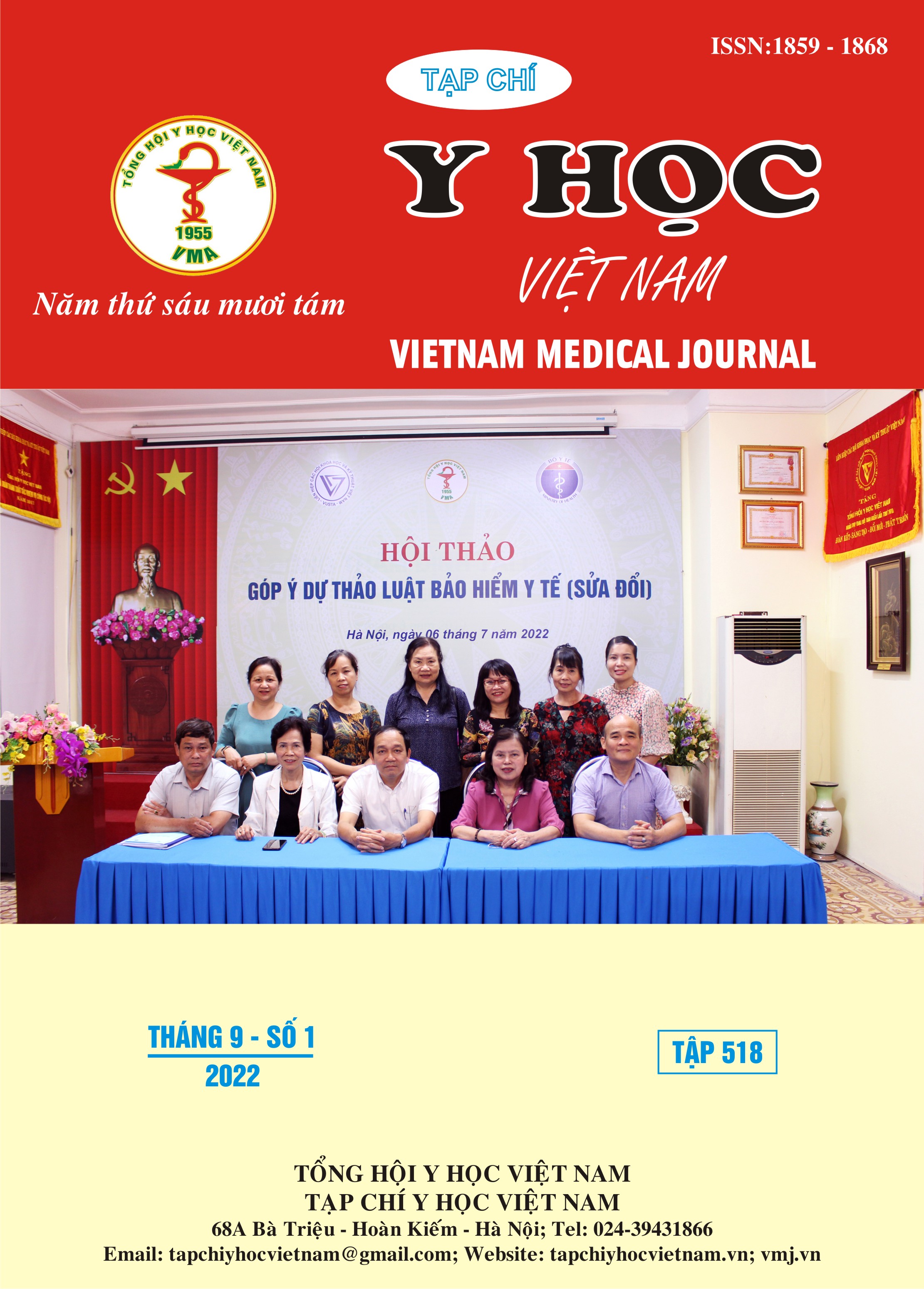STUDY ON CLINICAL CHARACTERISTIC AND SOME RELATED FACTORS OF ACUTE PANCREATITIS AFTER ENDOSCOPIC RETROGRADE CHOLANGIO PANCREATOGRAPHY FOR REMOVAL OF COMMON BILE DUCT STONE
Main Article Content
Abstract
Introduction: ERCP is a complicated procedure with advantages but still makes complications such as bleeding, duodenal perforation, acute pancreatitis… In these, acute pancreatitis (AP) is one early complication very common after ERCP, serious degree of AP from oedema to necrosis related to factors before and during procedure such as age, sex, Oddi Sphincter anatomy, conventional factor… Objectives: Comment some clinical, paraclinical characteristics of acute pancreatitis, and confirmation some related factors to AP after ERCP for removal of CBD stone. Subjects & Methods: A combination of prospective and retrospective on 61 patients of AP after ERCP for removal of CBD stone from 8/2020 - 7/2022 at Military Hospital 354 and Bach Mai Hospital. Results: Mean age 63.4 ± 17.8 (18-98 y.o.); Male 54.1%, female 45.9%; Clinical symptoms: pain on right subcostal quadrant or epigastric (94.6%), fever (52.2%), jaundice (32.5%). CT and MRI: 1 stone (85.4%), almost size of stone <1cm (74%), CBD diameter 1-2cm: 82.7%. Acute cholangitis was 42.1% but almost light and mild (95%). Amylase hight with mean concentration of 529.3 U/l (maximum 5514 U/l). Acute pancreatitis on group of acute cholangitis (68.9%) higher than group without this complication (36.1%) (p<0,05). Acute pancreatitis in group with balloon stretching (65.6%) and group without technique (31%) (p<0.05). The rate of AP after ERCP of group with guidewire stent and stone ≥1 cm (67.2%) higher than stone <1cm (16.8%) (p<0.05). Conclusion: Acute pancreatitis is the most common early complication after ERCP for removal CBD stone.
Article Details
Keywords
ERCP (Endoscopic Retrograde Cholangio Pancreatography), Acute pancreatitis, Common bile duct stone
References
2. Pekgöz M. (2019). Post-endoscopic retrograde cholangiopancreatography pancreatitis: A systematic review for prevention and treatment. World J Gastroenterol, 25(29), 4019–4042.
3. ASGE Standards of Practice Committee, Anderson M.A., Fisher L. và cộng sự. (2012). Complications of ERCP. Gastrointest Endosc, 75(3), 467–473.
4. Anh Tân, N., Hồng Thái, (2022). Kết quả điều trị sỏi ống mật chủ bằng kỹ thuật nội soi mật tụy ngược dòng tại bệnh viện đa khoa tỉnh Bắc Ninh. Tạp Chí Học Việt Nam 5112, 511(2), 53–56.
5. Linh N. T. N, Ngoạn H. V. (2019). Đánh giá kết quả chăm sóc bệnh nhân sau lấy sỏi ống mật chủ qua nội soi mật tụy ngược dòng tại Bệnh viện Trung ương Quân đội 108. Tạp Chí Dược Lâm Sàng 108, Tập 14-Số 7, 18–26.
6. Cheng C.-L., Sherman S., Watkins J.L. và cộng sự. (2006). Risk factors for post-ERCP pancreatitis: a prospective multicenter study. Am J Gastroenterol, 101(1), 139–147.
7. Công Long, N, & Lê Long, L. . (2022). Đánh giá kết quả phương pháp nội soi mật tụy ngược dòng ở bệnh nhân sỏi ống mật chủ tại bệnh viện Bạch Mai. Tạp Chí Y Học Việt Nam, 513(1), 62–65.
8. Freeman M.L., DiSario J.A., Nelson D.B. và cộng sự. (2001). Risk factors for post-ERCP pancreatitis: a prospective, multicenter study. Gastrointest Endosc, 54(4), 425–434.
9. Huang Q., Shao F., Wang C. và cộng sự. (2018). Nasobiliary drainage can reduce the incidence of post-ERCP pancreatitis after papillary large balloon dilation plus endoscopic biliary sphincterotomy: a randomized controlled trial. Scand J Gastroenterol, 53(1), 114–119.
10.Sofuni A., Maguchi H., Mukai T. và cộng sự. (2011). Endoscopic pancreatic duct stents reduce the incidence of post-endoscopic retrograde cholangiopancreatography pancreatitis in high-risk patients. Clin Gastroenterol Hepatol Off Clin Pract J Am Gastroenterol Assoc, 9(10), 851–858; quiz e110.


